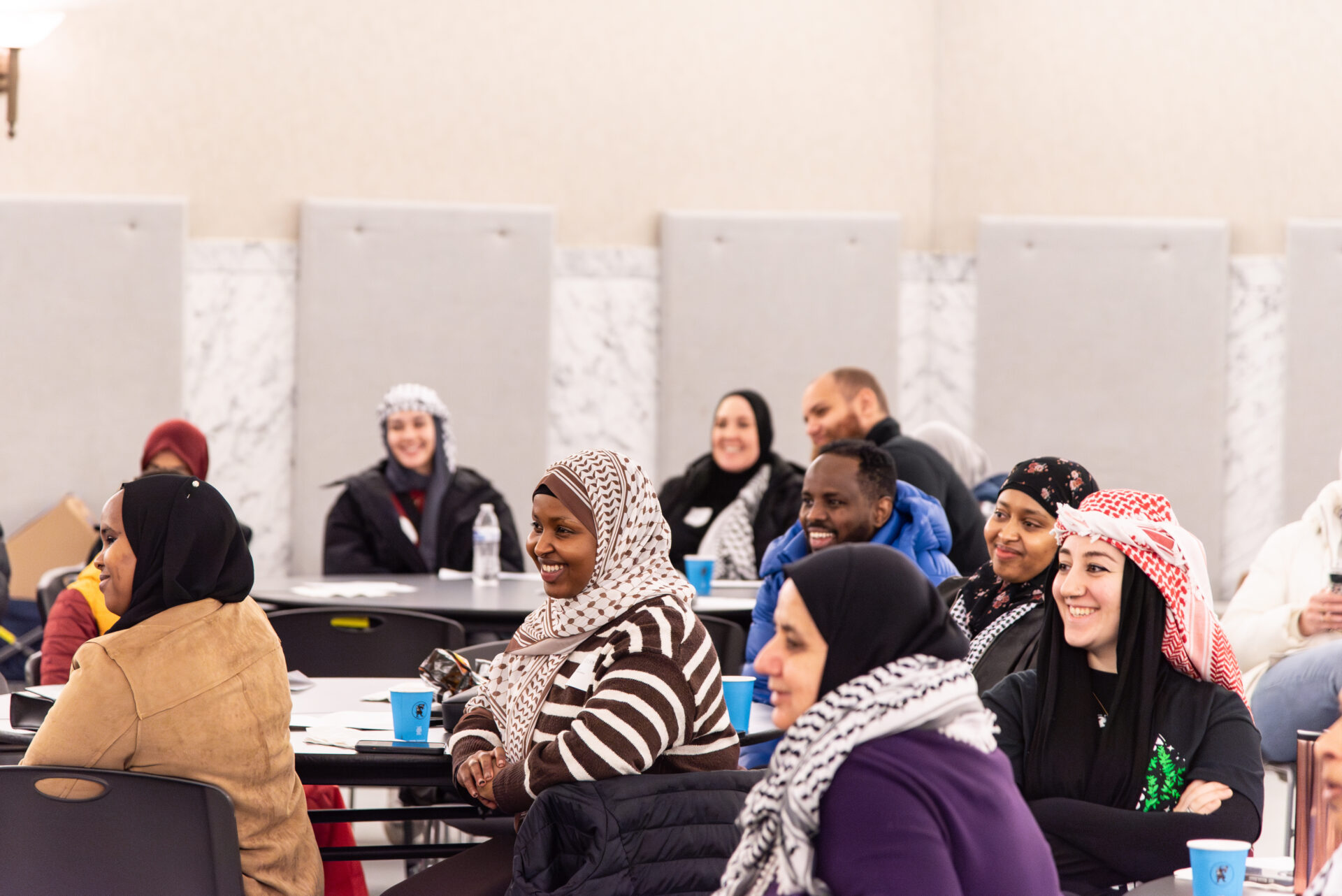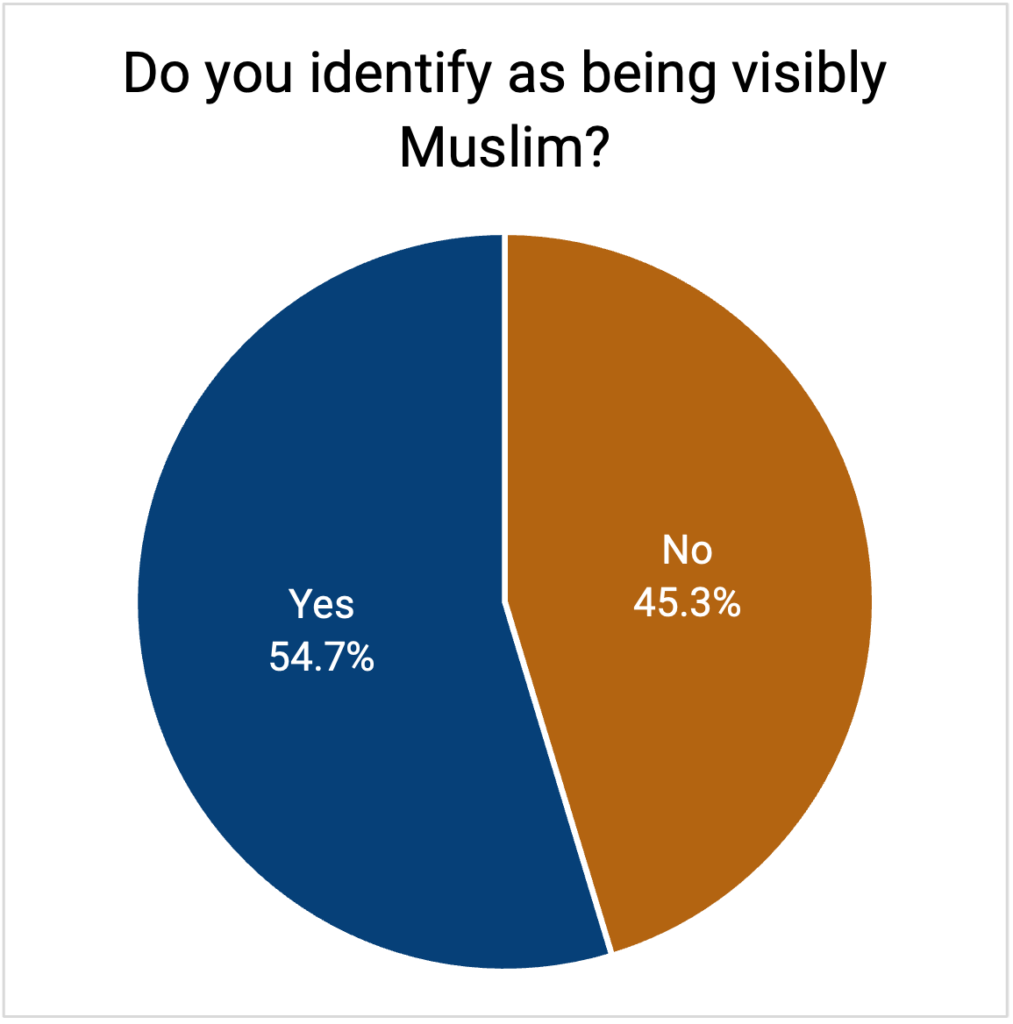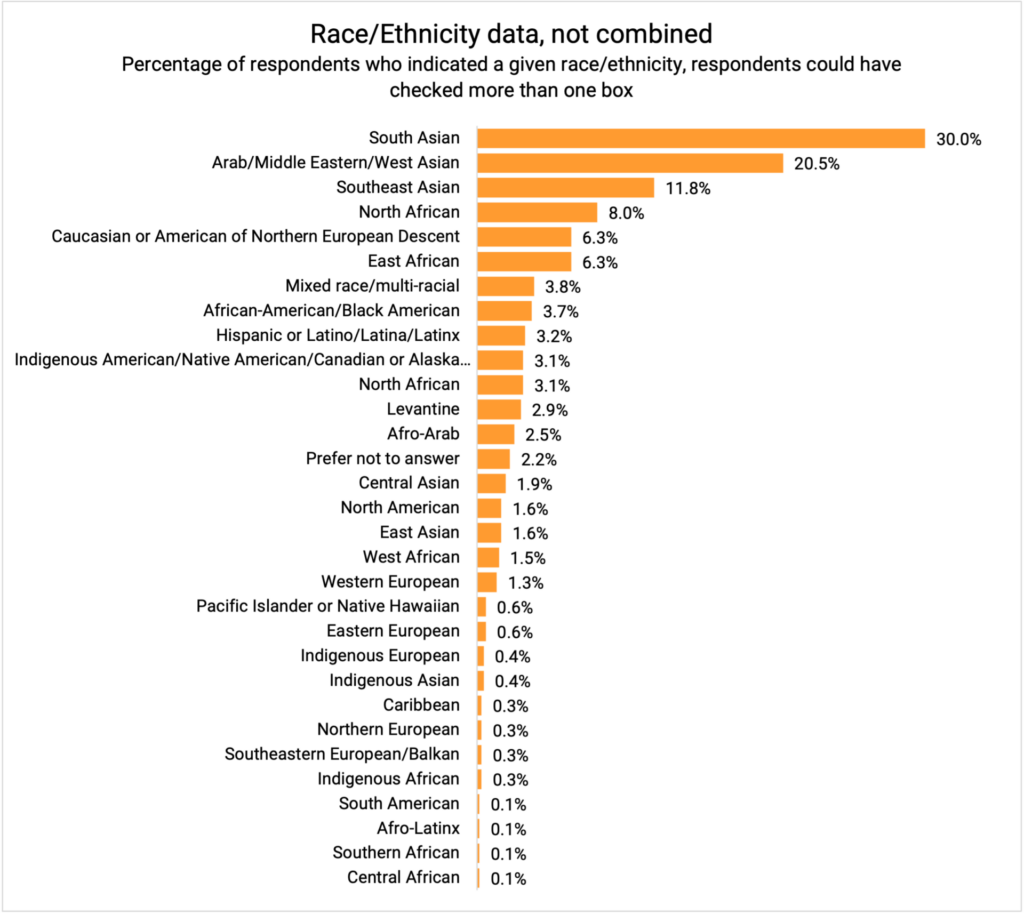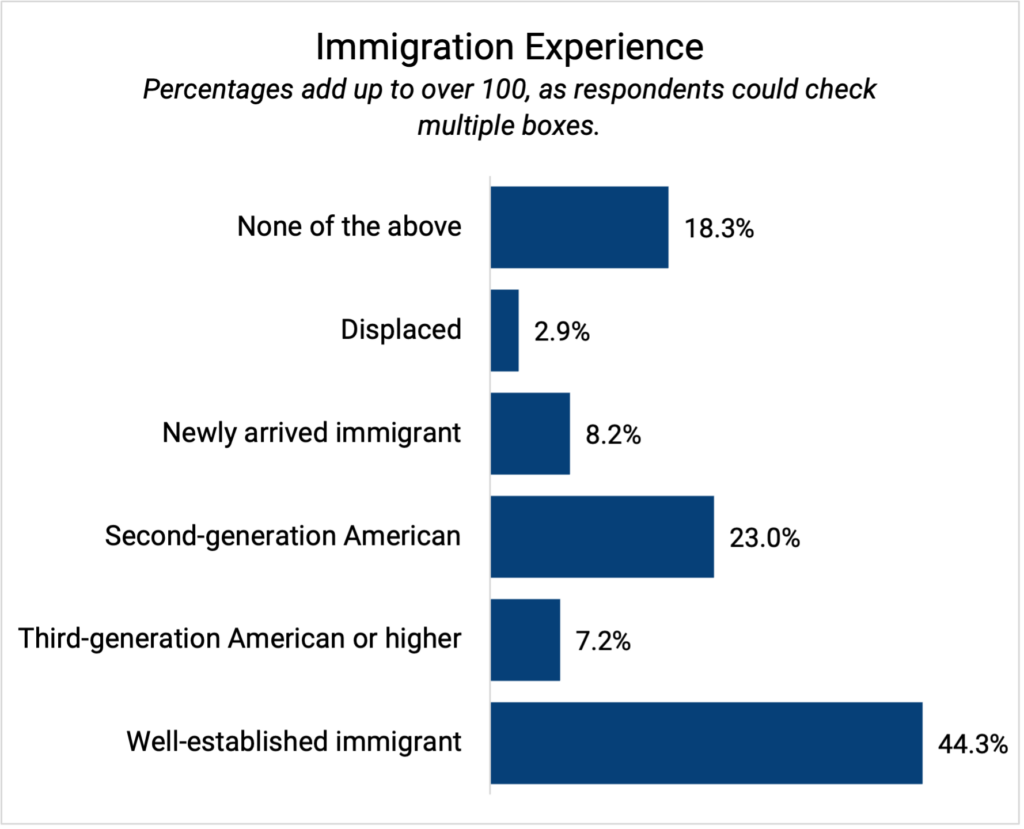To understand the demographics of Washington state’s Muslim communities, the WA Muslim Survey asked respondents to report information such as zip code, household size, age, race/ethnicity, gender, citizenship status, education level, English-speaking proficiency, visibility as a Muslim, and whether they belonged to any state protected classes.
Survey respondents were overwhelmingly from King County (69.3%), with Snohomish (14.8%) and Pierce County (5.4%) as the next most common. Other counties with over 1% of respondents were Thurston, Kitsap, Clark, Spokane, and Whatcom.
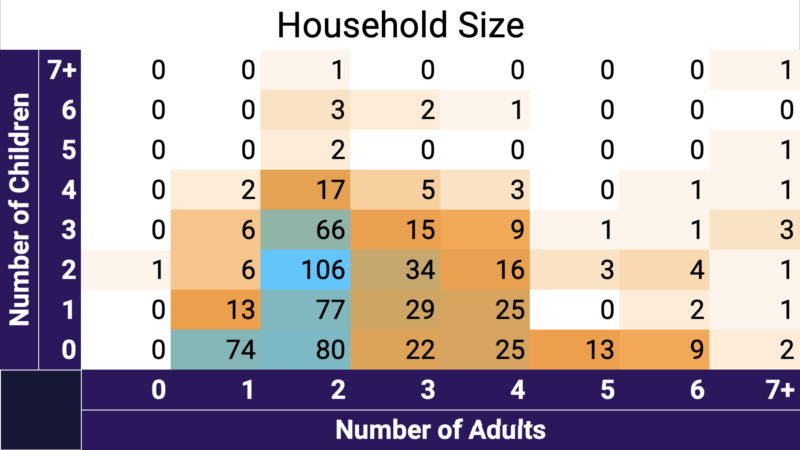
Fifty-one and a half percent (51.5%) of respondents’ households had two adults, followed by three adults (15.7%), and one adult (14.8%). One-third of households did not have children (32.9%), followed by two children (24.9%) and one child (21.5%). The most common household makeup was 2 adults and 2 children (15.5%), followed by 2 adults and 0 children (11.7%), and 2 adults and 1 child (11.3%).
In total, 66.2% of respondents had a Bachelor’s degree or higher.
Over half of respondents (56.0%) were between the ages 25 to 44. It is possible that younger people were more able to access and take the CAIR-WA survey, however, this finding does align with Pew Research Center data showing the American Muslim population as younger than the general population of the U.S. Based on CAIR-WA’s data, Muslims in Washington are generally younger than the Washington state general population, where, according to the Washington State Office of Financial Mangement population estimates for 2023, 28.5% are between the ages of 25 and 44.
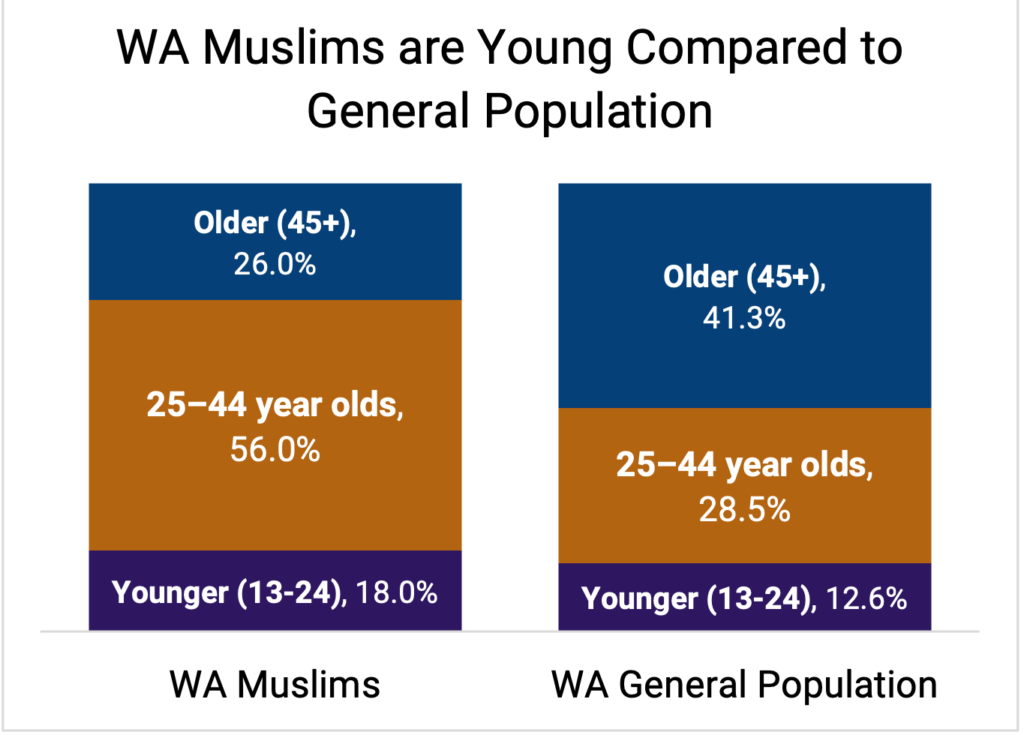
When asked “What is your gender?” 50.7% of respondents marked female, 47.4% male, and 1.6% preferred not to answer. Two respondents marked “Other” and both indicated that they identified as nonbinary.
When asked “Do you identify as being ‘visibly Muslim’ due to wearing any religious or cultural attire, such as a hijab, niqab, kufi, or traditional outfits, on a regular basis?” 54.7% of respondents identified as visibly Muslim, and 45.3% identified as not visibly Muslim.
South Asian (28.9%), Arab (17.1%), and Southeast Asian (9.4%) were the most represented racial or ethnic categories. Since the race/ethnicity question permitted respondents to check as many answers as applied to them and allowed respondents to self-describe, we received a wealth of information about multiracial respondents, with 106 unique responses out of 684 respondents.After cleaning the data, there were 12 categories with at least 2% of the sample. Categories with less than 2% of the sample were collected into the “Other” group, which includes Carribean, Bosnian, Pacific Islander or Native Hawaiian, West African, and European, among others. Minority ethnic groups such as Berber, Cham, and Pashtun were included in write-in responses. The mixed race/multi-racial grouping also includes a diversity of responses.
Muslims in Washington are very racially diverse, with no single category making up more than 30% of the sample.
When asked about proficiency in English, the majority of respondents reported native/primary fluency (61.7%) or professional fluency (33.2%). Less than five percent (4.8%) reported limited proficiency, and two respondents reported no English. See Limitations section for information on limitations in language accessibility, which may have affected answers to this question.
Most respondents were citizens (72.9%) or lawful permanent residents (12.9%). The survey asked about immigration legal status as well as immigration experience. In response to the immigration experience question, notable proportions of respondents identified as well-established immigrants (41.8%) and second-generation Americans (22.8%).
Of the respondents, 9.2% identified as being “a person with a disability, a person with an impairment, or other chronic health or learning condition”, 2.8% identified with a sexual orientation that protected by state anti-discrimination laws, 1.3% used a trained dog or service animal, and 1.5% were veterans.

